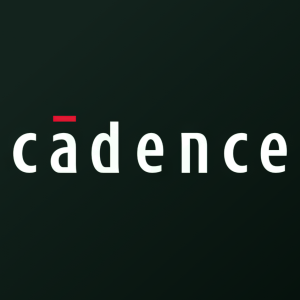Redefining Hearing Aids with Cadence DSPs
Cadence Design Systems is transforming hearing aid technology through advanced DSP solutions. The company's Tensilica HiFi and Fusion F1 DSP family offers low-power, high-performance solutions for modern hearing aids, addressing key challenges in the industry. With over 5% of the global population requiring hearing rehabilitation, Cadence's technology focuses on improving signal processing, noise reduction, and incorporating AI capabilities. The company has collaborated with GlobalFoundries, Hoerzentrum Oldenburg, and Leibniz University Hannover to develop SmartHeAP, the industry's first binaural hearing aid system-on-chip prototype.
Cadence Design Systems sta trasformando la tecnologia degli apparecchi acustici attraverso soluzioni DSP avanzate. La famiglia di DSP Tensilica HiFi e Fusion F1 dell'azienda offre soluzioni a basso consumo e ad alte prestazioni per moderni apparecchi acustici, affrontando le sfide chiave del settore. Con oltre il 5% della popolazione globale che necessita di riabilitazione uditiva, la tecnologia di Cadence si concentra sul miglioramento dell'elaborazione del segnale, sulla riduzione del rumore e sull'integrazione delle capacità di intelligenza artificiale. L'azienda ha collaborato con GlobalFoundries, Hoerzentrum Oldenburg e l'Università di Leibniz Hannover per sviluppare SmartHeAP, il primo prototipo di sistema-on-chip per apparecchi acustici binaurali nel settore.
Cadence Design Systems está transformando la tecnología de los audífonos a través de soluciones DSP avanzadas. La familia de DSP Tensilica HiFi y Fusion F1 de la empresa ofrece soluciones de bajo consumo y alto rendimiento para audífonos modernos, abordando los principales desafíos de la industria. Con más del 5% de la población mundial requiriendo rehabilitación auditiva, la tecnología de Cadence se enfoca en mejorar el procesamiento de señales, la reducción de ruido y en incorporar capacidades de inteligencia artificial. La empresa ha colaborado con GlobalFoundries, Hoerzentrum Oldenburg y la Universidad de Leibniz Hannover para desarrollar SmartHeAP, el primer prototipo de sistema en chip para audífonos binaurales en la industria.
Cadence Design Systems는 고급 DSP 솔루션을 통해 보청기 기술을 혁신하고 있습니다. 이 회사의 Tensilica HiFi 및 Fusion F1 DSP 제품군은 현대 보청기를 위한 저전력 고성능 솔루션을 제공하며, 업계의 주요 과제에 대응하고 있습니다. 전 세계 인구의 5% 이상이 청각 재활이 필요한 상황에서, Cadence의 기술은 신호 처리 개선, 소음 감소 및 인공지능 기능 통합에 중점을 두고 있습니다. 이 회사는 GlobalFoundries, Hoerzentrum Oldenburg, Leibniz대학교 하노버와 협력하여 업계 최초의 양이음 보청기 시스템 온 칩 프로토타입인 SmartHeAP을 개발했습니다.
Cadence Design Systems transforme la technologie des aides auditives grâce à des solutions DSP avancées. La famille de DSP Tensilica HiFi et Fusion F1 de la société offre des solutions à faible consommation et à haute performance pour les aides auditives modernes, répondant aux principaux défis de l'industrie. Avec plus de 5 % de la population mondiale nécessitant une réhabilitation auditive, la technologie de Cadence se concentre sur l'amélioration du traitement du signal, la réduction du bruit et l'intégration des capacités d'intelligence artificielle. L'entreprise a collaboré avec GlobalFoundries, Hoerzentrum Oldenburg et l'Université de Leibniz Hannover pour développer SmartHeAP, le premier prototype de système sur puce d'aides auditives binaurales de l'industrie.
Cadence Design Systems transformiert die Technologie für Hörgeräte durch fortschrittliche DSP-Lösungen. Die Tensilica HiFi und Fusion F1 DSP-Familie des Unternehmens bietet energieeffiziente und leistungsstarke Lösungen für moderne Hörgeräte und adressiert die wichtigsten Herausforderungen der Branche. Da über 5 % der Weltbevölkerung eine Hörrehabilitation benötigt, konzentriert sich die Technologie von Cadence auf die Verbesserung der Signalverarbeitung, die Geräuschreduzierung und die Integration von KI-Funktionen. Das Unternehmen hat mit GlobalFoundries, Hoerzentrum Oldenburg und der Leibniz Universität Hannover zusammengearbeitet, um SmartHeAP, den ersten Prototyp eines System-on-Chip für binaurale Hörgeräte in der Branche, zu entwickeln.
- Development of industry's first binaural hearing aid system-on-chip prototype (SmartHeAP)
- Strategic collaboration with GlobalFoundries, Hoerzentrum Oldenburg, and Leibniz University Hannover
- Advancement in DSP technology offering both low power consumption and high performance
- None.
Insights
This article, while discussing Cadence's DSP technology in hearing aids, represents more of a technical overview than a market-moving development. The piece highlights existing technology and ongoing research without announcing any new products, significant partnerships, or financial implications. The collaboration mentioned with GlobalFoundries and other entities for the SmartHeAP prototype was previously announced and doesn't contain new developments.
The discussion of Tensilica HiFi and Fusion F1 DSP families describes existing product lines rather than new innovations. While the technology is impressive, focusing on hearing aid applications represents a relatively small segment of Cadence's overall business, which primarily generates revenue from electronic design automation (EDA) software and IP licensing.
For investors, this article serves more as a marketing piece showcasing Cadence's technological capabilities rather than presenting material information that would impact the company's financial performance or stock value.
NORTHAMPTON, MA / ACCESSWIRE / November 21, 2024 / Cadence Design Systems
Written by , Community Member
Hearing is one of the most essential senses for engaging with the world. It enables us to converse, appreciate music, and remain alert to our surroundings. Hearing loss is a prevalent issue affecting millions of individuals globally and disconnecting them from a world where sound is vital to others and the environment. The World Health Organization (WHO) reports that over
Although hearing aids have been available for many years, historically, access to these critical devices has been insufficient, resulting in numerous individuals lacking the necessary support. However, recent advances in hearing aid technology promise improved acoustic experiences, employing modern techniques like binaural processing and neural networks. These innovations demand sophisticated architecture to balance high memory needs with low power consumption in a user-friendly design. Cadence is at the forefront of this technological evolution, offering tools and IP solutions that enhance the accessibility, efficiency, and impact of hearing aids, paving the way for a more inclusive future.
This blog explores how Cadence's advanced DSPs are transforming hearing aid design and making them more accessible, efficient, and impactful.
Hearing Aids: A Testament to Human Ingenuity
The transition from analog to digital technology in the late 20th century further transformed hearing aids, offering superior sound quality, customization, and the ability to connect to various electronic devices, thus enhancing the user experience markedly. Today's hearing aids are highly effective, versatile, and nearly invisible, a significant advancement from early attempts to address hearing loss. They also feature advanced noise cancellation and connectivity options, allowing users to integrate seamlessly into the digital world. This progression not only highlights the industry's commitment to improving user experience and accessibility but also offers a glimpse into a future where hearing loss is no longer a barrier.
Challenges
Despite advancements and sophistication, there are several challenges related to hearing aid design and adoption. Users demand smaller, more discreet devices that don't sacrifice performance. While the shift towards sleeker designs is aesthetically pleasing, it introduces substantial complexities in product design. Designers face the challenges of integrating essential components, such as batteries and peripherals, into increasingly compact spaces. Power consumption remains a critical concern, as these devices must remain operational throughout the day. Leveraging neural networks to enhance the signal-to-noise ratio (SNR) for better quality demands additional memory capacity.
Consequently, there is a pressing need for flexible, low-power architectures that incorporate all necessary memory and peripherals without compromising the device's compact size. Adopting AI for adjusting hearing aid volume to fit an individual's specific auditory requirements is a significant challenge and demands more memory and effort. Besides this, reliability and cost are significant challenges for manufacturers.
Cadence's Role in Transforming Hearing Aids
In hearing aid development, the capacity to evaluate the energy efficiency of SoCs across different frequencies in real time is crucial. These applications demand cohesive, energy-efficient solutions that can uphold high performance. The and emphasize minimal power usage while providing robust performance, ideally suited for a wide range of audio and voice applications.
The Cadence Tensilica HiFi DSP family, a high-performance audio technology with AI acceleration and advanced DSP capability, offers feature-rich audio, speech, and imaging for wearables, automotive, home entertainment, digital assistants, and ASR. The accelerates innovation with its comprehensive instruction set and supports fixed- and floating-point data types. Simplifying software development, it offers C/C++ programming, an auto-vectorizing compiler, and a rich DSP software library through the Cadence Tensilica Xplorer development environment.
With the flexibility to customize and enhance performance through additional instructions and better I/O bandwidth, the Tensilica HiFi and Fusion DSP families offer a robust, low-energy audio solution compatible across an expansive software ecosystem for various applications and devices.
Conclusion
Technological advancements are driving hearing aid evolution; the future of hearing aids lies in further miniaturization and functionality enhancement. Cadence's ongoing innovations aim to improve signal processing and noise reduction, even in challenging environments. The integration of neural networks promises more apparent sound transmission and greater adaptability.
Cadence is working on improving how these devices process signals and reduce noise and has initiated a with distinguished entities like GlobalFoundries (GF), Hoerzentrum Oldenburg gGmbH, and Leibniz University Hannover. This collaboration has borne fruit in the form of the industry's first binaural hearing aid system-on-chip (SoC) prototype, the Smart Hearing Aid Processor ().
Contact Info:
Spokesperson: Cadence Design Systems
Website:
Email: info@3blmedia.com
SOURCE: Cadence Design Systems
View the original on accesswire.com
FAQ
What is Cadence's latest innovation in hearing aid technology?
What are the key features of Cadence's Tensilica HiFi DSP family?







